Design Process
RESEARCH DURING LOCKDOWN: Initially, in order to understand the space I would be working in I began by mapping the restaurant experience in terms of financial, material and information flows to help identify the key actors using an ecosystem map. I then mapped who, when, what, where and how we come into contact when dining out.
With all these people, places and things that we come into contact with, quickly it became obvious why restaurants were closed down to help stop the spread of COVID19. A diner touches on average 28 different things when dining out, not including their own belongings, think of the potential for the virus to spread!
During lockdown I interviewed many restaurant owners, managers, floor staff, kitchen staff, critics and customers from across Ireland and Europe on Zoom or over the phone. I prioritised my interviews based on an adapted version of a stakeholder map. I also spent a lot of time keeping tabs on the situation through social media, it gave me the opportunity to get immediate and often raw responses to the situation as it developed. Many restaurant owners complained that the guidelines put all the responsibility on them and none on the customer; but when you are sitting at the table, there is little you can do to stop the spread as a customer. Your responsibility as a diner is for your own hygiene and to ensure you don't go out when showing symptoms or as a suspected close contact. As you sit there as a customer you have very little control over what's going on around you in a restaurant, you put your health and safety in their hands.
From there I created a causal loop diagram to highlight the impact the various elements within a restaurant have on each other to ensure I truly understood the systems at play. We know from this that a good experience now starts with COVID19 compliance.
COVDI19 compliance sounds like a boring topic but it is fundamental to any restaurant's future, not just my clients.
As the restaurants and other customers adhere to the guidelines, customers feel safe. When they feel safe you have more customers, which means more customers and you're making more money. But the better we adhere to guidelines and the safer people feel; the more relaxed they get, with relaxation also comes complacency, which in turn reduces adherence to guidelines, which makes people feel less safe and less likely to eat out.
It is a self reinforcing loop that is going to be a big challenge for restaurants now and into the future.




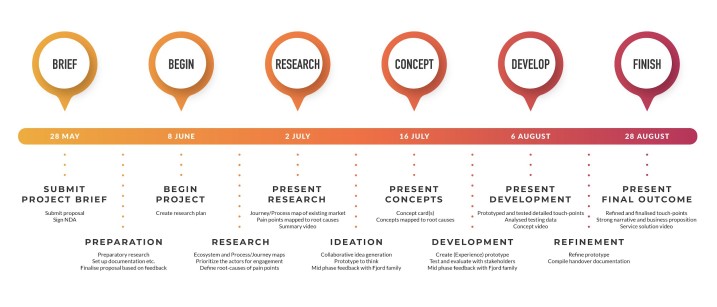
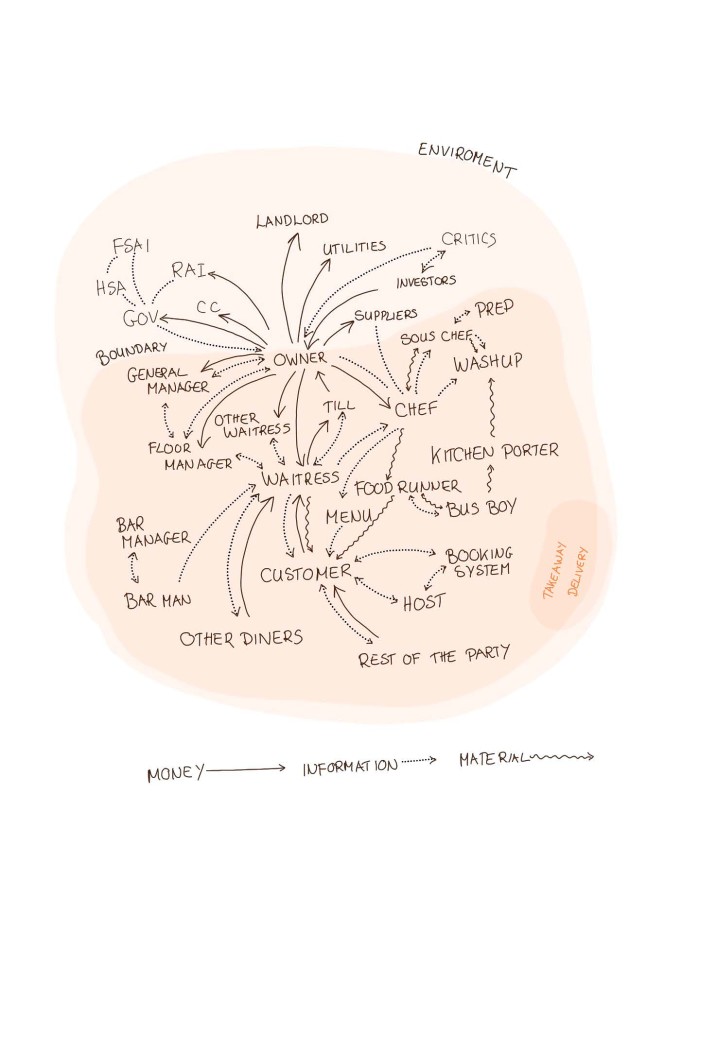
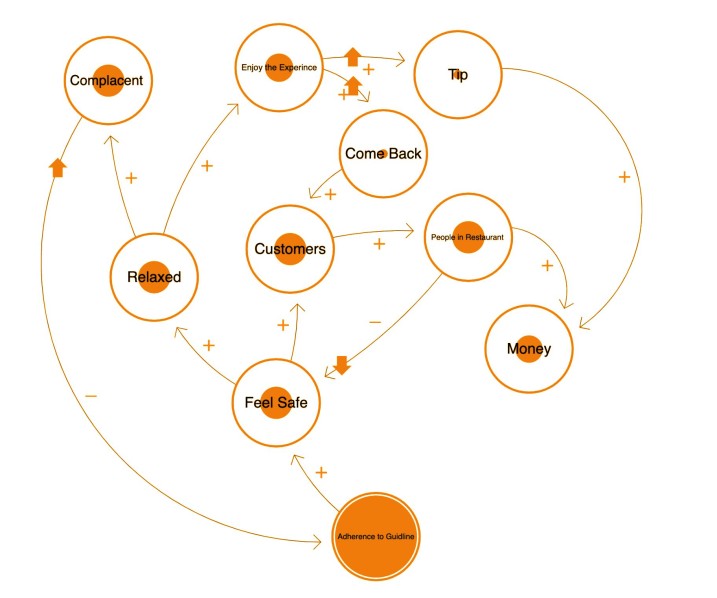
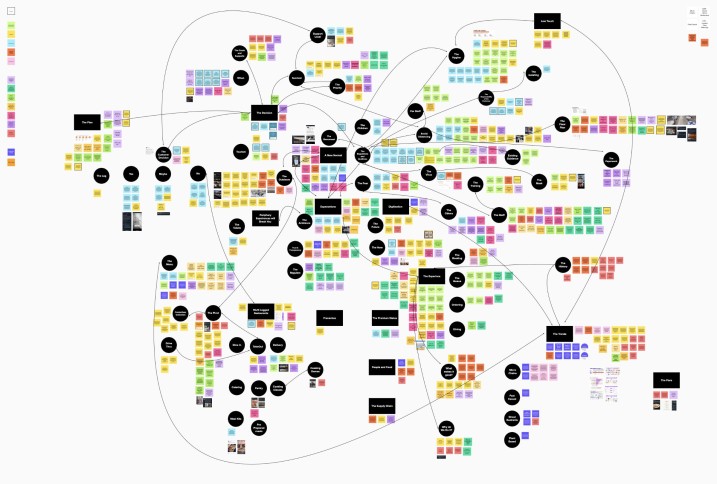
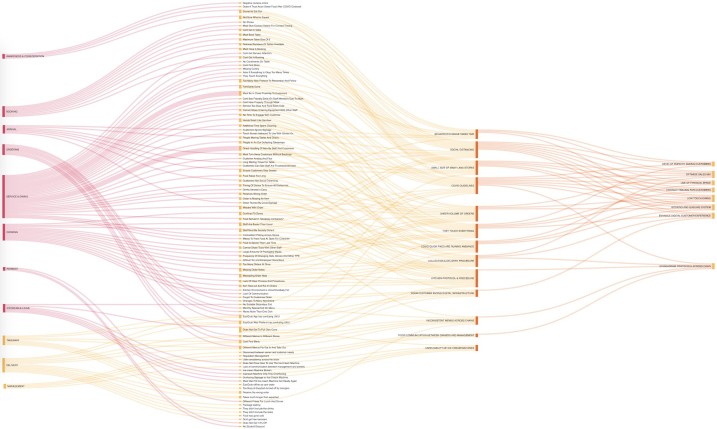
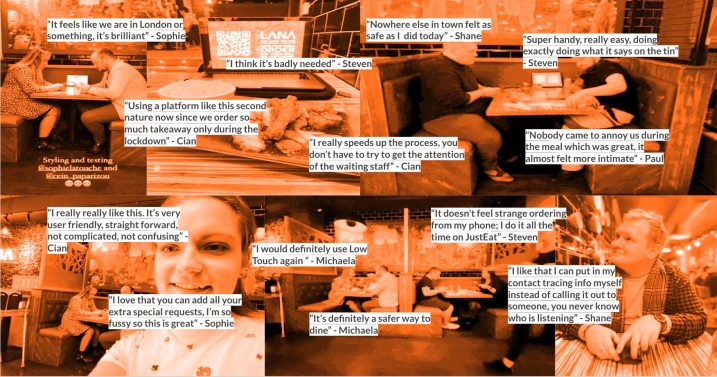
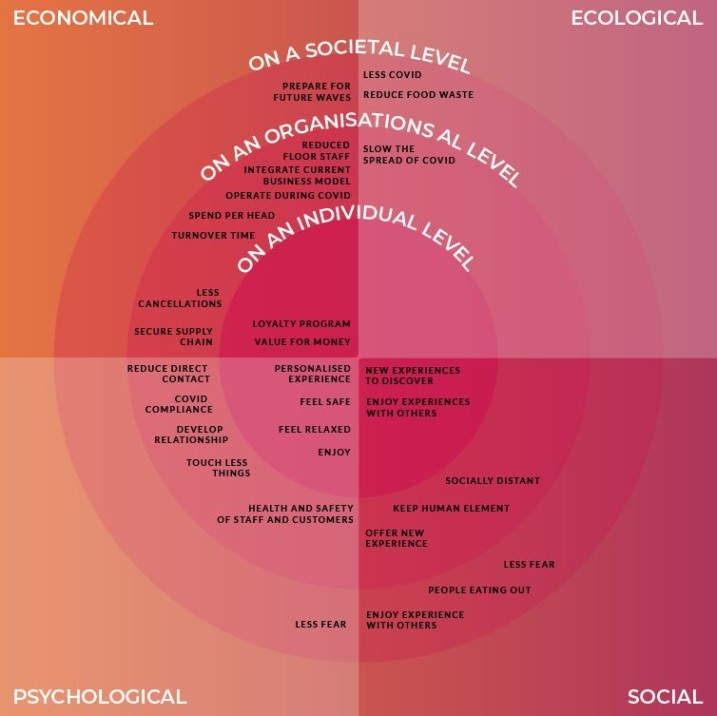
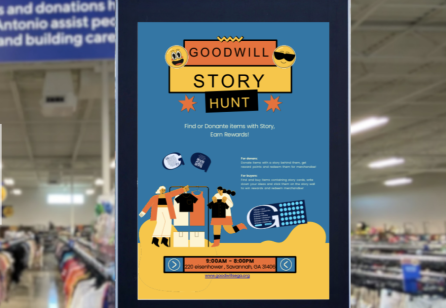
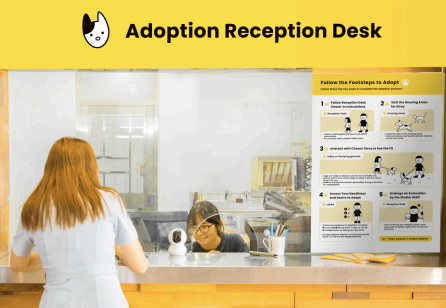
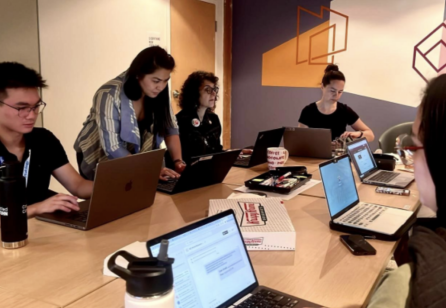
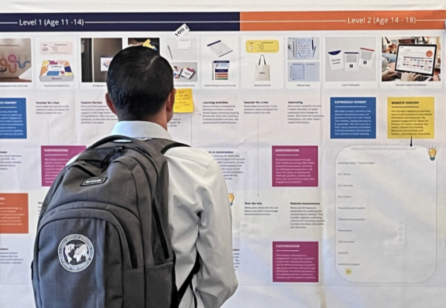

Share your thoughts
0 RepliesPlease login to comment